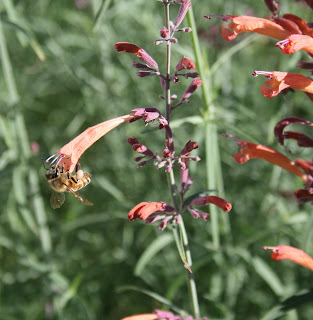Growing Hardy Lavender in Colorado
Hardy Lavender is an outstanding addition to your garden, providing seasonal color and fragrance to the landscape as well as providing support for pollinators. There are two types of hardy lavender that do well here: English and French. English lavender - Lavandula angustifolia, includes Munstead, Hidcote, Elegance Purple and Elegance Pink varieties.
'Hidcote Superior’ is a compact English Lavender that grows only 18-24 inches tall, with highly fragrant, deep purple-blue flowers. An excellent choice for both fresh and dried bouquets, this lavender attracts bees and butterflies but repels deer and rabbits. Blooms during the summer.
'Munstead' is an English Lavender that has fragrant, cool lavender-blue spikes and gray-green, mounded foliage. Munstead will usually bloom in June and July.
French lavender (intermedia) includes Grosso, Provence and Fred Boutin.
‘Grosso’ Lavender is very showy, with large and spiky dark purple blooms set against silver foliage and purple bracts, adding to its colorful presence in the garden. Sometimes referred to as “the lavender of lavenders”, Grosso will bloom through the season.
Hardy lavender can be planted now and through the fall and does best when planted where it will receive full sun and in soil that drains well. When planting lavender, soil preparation should include the addition of coarse organic material to the planting site. Mountain Magic Soil Pep is a good selection to add to your existing soil because it contains compost and bark fines. Mix Mountain Magic Soil Pep at a 50:50 ratio with the existing soil. We do not recommend adding rock or sand to our typical clay soils. Once the planting site is ready, apply Root Stimulator at the rate of three and a half tablespoons per gallon of water. Root Stimulator should be applied again one month after planting.
Once established, pruning helps to extend the life of the plant by promoting growth, branching, and blooming. Because lavender blooms on new stems, pruning should take place when green leaves start to emerge from the base of the plant in the spring. Remove approximately one third of the top. Pruning keeps the plant from splitting open and becoming too woody. As a rule, Lavender does not require fertilizing.
Use this colorful, aromatic perennial in your herb garden, perennial bed or mixed in your roses. By selecting from a variety of lavenders, you’ll be able to provide interest and support pollinators as well as harvest fresh lavender whenever you choose.


















22.jpg)